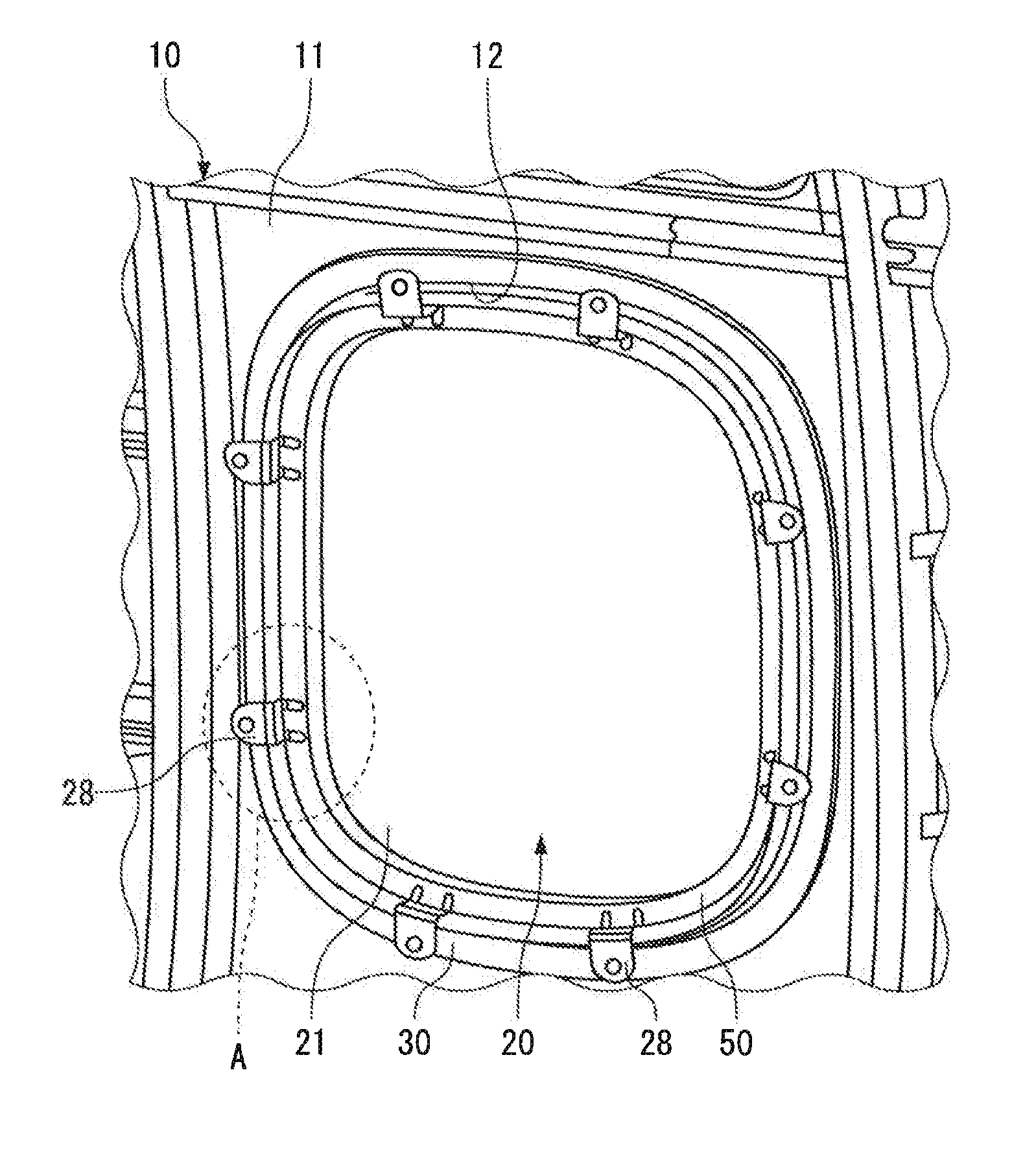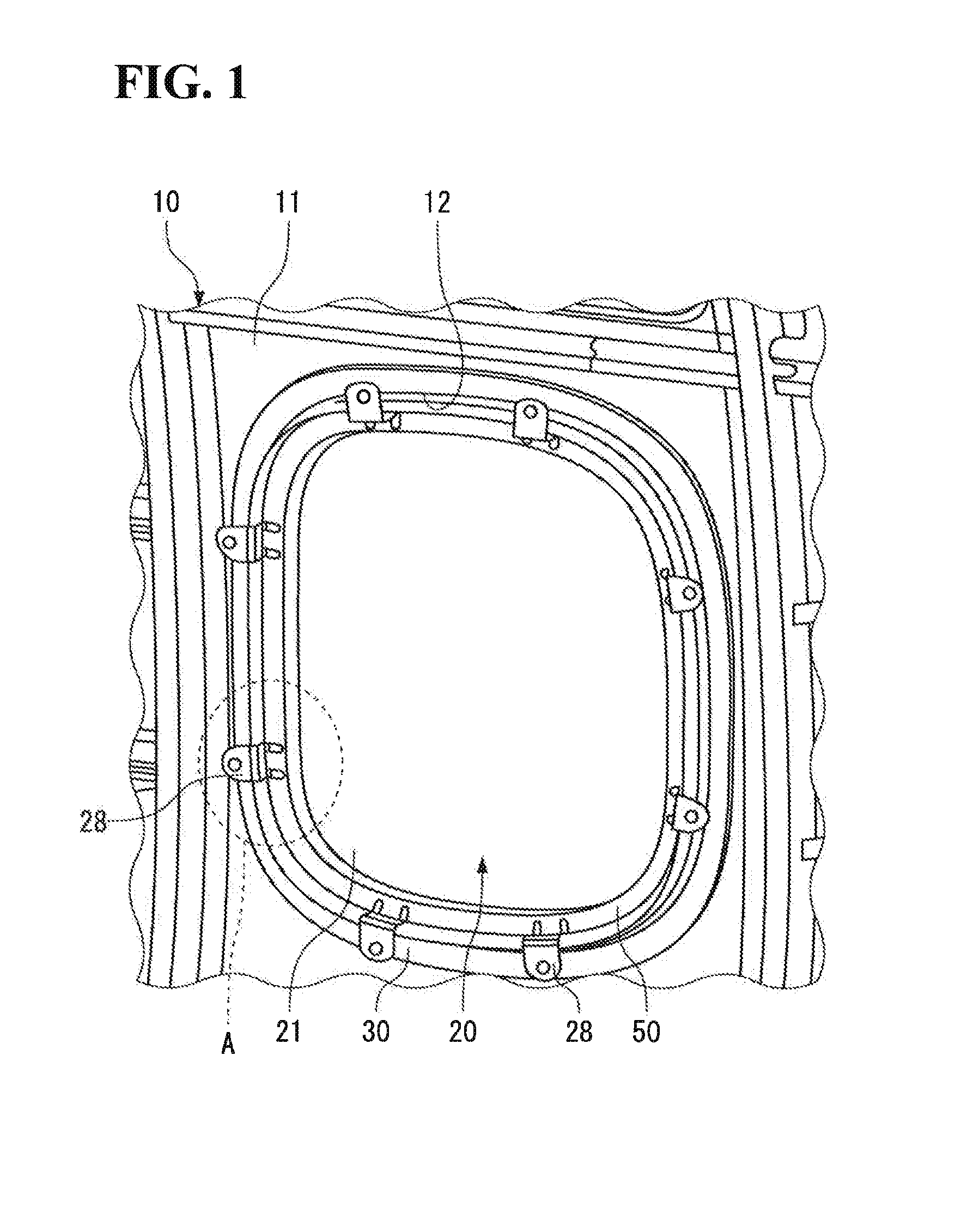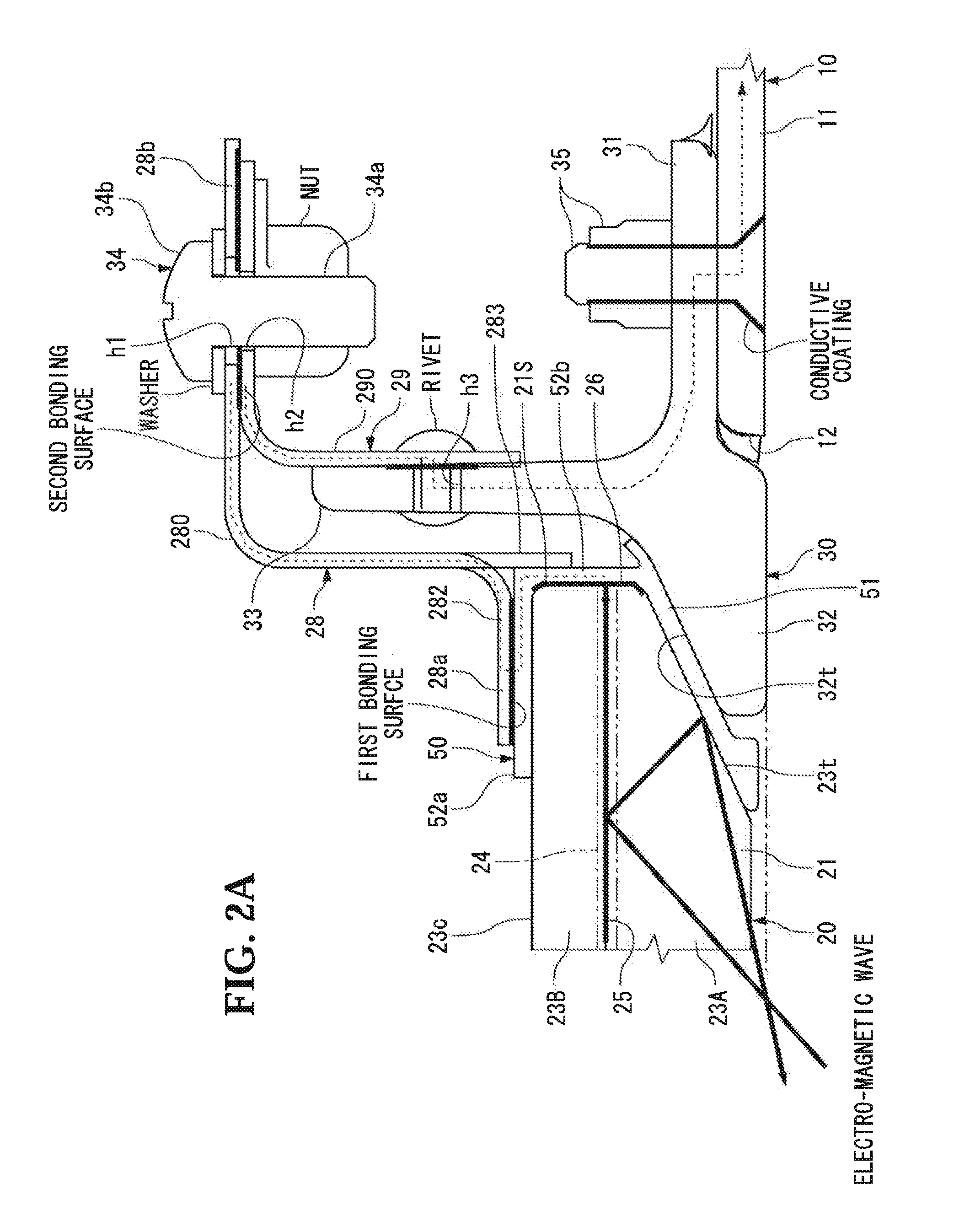Aircraft window and aircraft
a technology for aircraft and windows, applied in the field of aircraft windows, can solve the problems that wet-type conductive paint, such as a conductive sealant, is not suitable for the application, and achieves the effects of preventing electromagnetic noise, preventing electromagnetic noise invasion, and low cos
- Summary
- Abstract
- Description
- Claims
- Application Information
AI Technical Summary
Benefits of technology
Problems solved by technology
Method used
Image
Examples
example 1
[0093]Examinations were carried out on the electromagnetic wave attenuation effect, with the volume resistivity of the gasket seal being changed. A gasket seal as shown in FIGS. 2A and 2B was provided on the outer perimeter of each of two acrylic plates having thicknesses t1=9.5 mm and t2=4 mm, and an external dimension of 248 mm×348 mm, and electromagnetic shielding effectiveness tests were carried out in accordance with IEEE STD-299-2006 “IEEE Standard Method for Measuring the Effectiveness of Electromagnetic Shielding Enclosures”. In this case, in addition to a gasket seal of a reference having no conductivity, gasket seals having a volume resistivity of 1.7 Ωcm (Measurement 1), that of 5 Ωcm (Measurement 2), that of 210 Ωcm (Measurement 3), and that of 310 Ωcm (Measurement 4) were prepared. Moreover, as the acrylic plate, except for comparative examples, shield mesh materials composed of polyester fibers of monofilaments copper-plated and black nickel-plated with a surface resis...
example 2
[0098]Next, examinations were carried out on the electromagnetic wave attenuation effect, with the electromagnetic shield mesh 25 being electrically bonded at a low impedance.
[0099]The electromagnetic shield mesh 25 as shown in FIG. 2A was arranged between two acrylic plates having thicknesses t1=8.1 mm and t2=4.6 mm, and an external dimension of 399 mm×327 mm, and electromagnetic shielding effectiveness tests were carried out in accordance with IEEE STD-299-2006 “IEEE Standard Method for Measuring the Effectiveness of Electromagnetic Shielding Enclosures”. A shield mesh obtained by stacking shield mesh materials composed of polyester fibers of monofilaments copper-plated and black nickel-plated with a surface resistivity of 0.15 Ω / square was used as the electromagnetic shield mesh 25.
[0100]As a result, as shown in FIGS. 10A and 10B, an attenuation effect of at least 20 dB or more against electromagnetic waves was obtained over the entire frequency bands from 100 MHz to 18 GHz in me...
PUM
 Login to View More
Login to View More Abstract
Description
Claims
Application Information
 Login to View More
Login to View More - R&D
- Intellectual Property
- Life Sciences
- Materials
- Tech Scout
- Unparalleled Data Quality
- Higher Quality Content
- 60% Fewer Hallucinations
Browse by: Latest US Patents, China's latest patents, Technical Efficacy Thesaurus, Application Domain, Technology Topic, Popular Technical Reports.
© 2025 PatSnap. All rights reserved.Legal|Privacy policy|Modern Slavery Act Transparency Statement|Sitemap|About US| Contact US: help@patsnap.com



